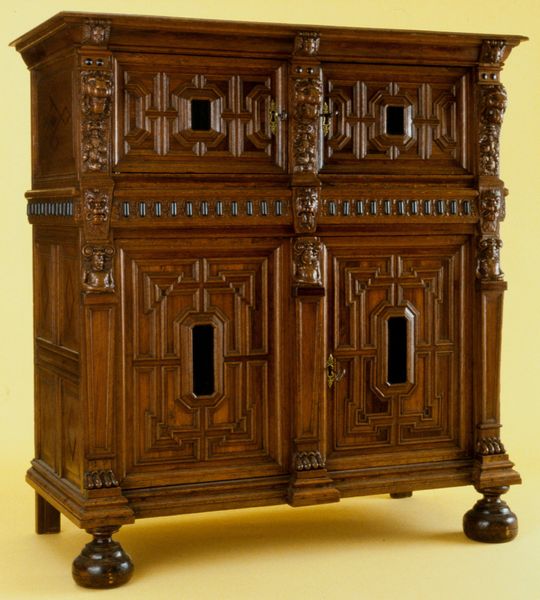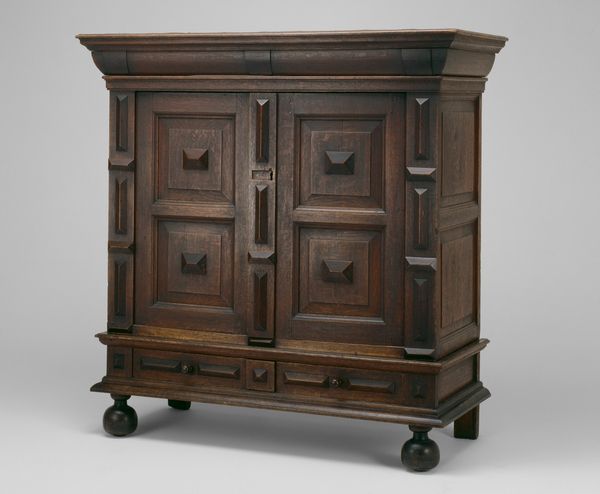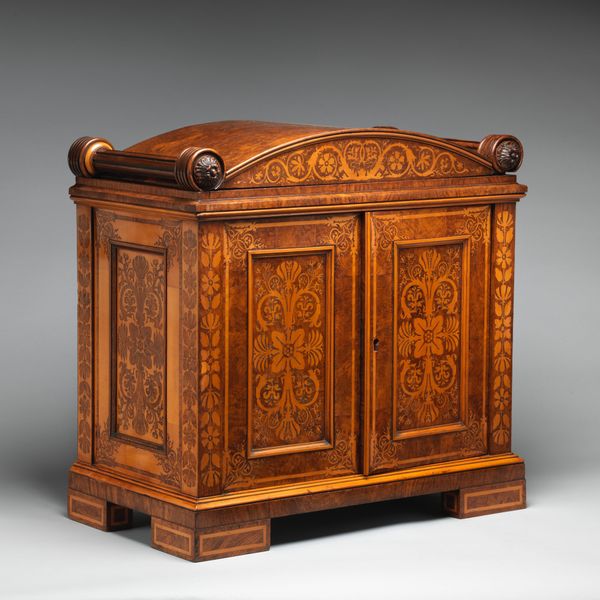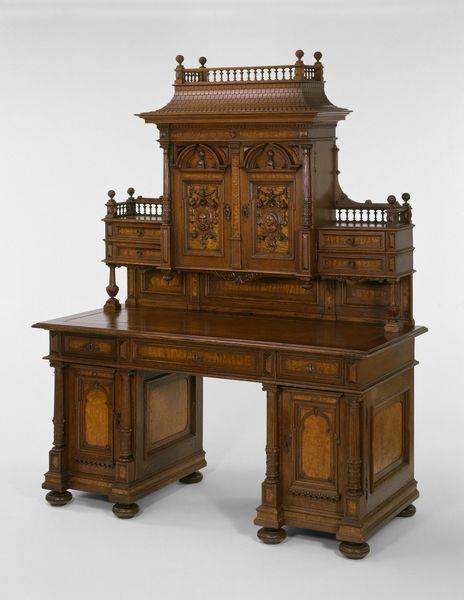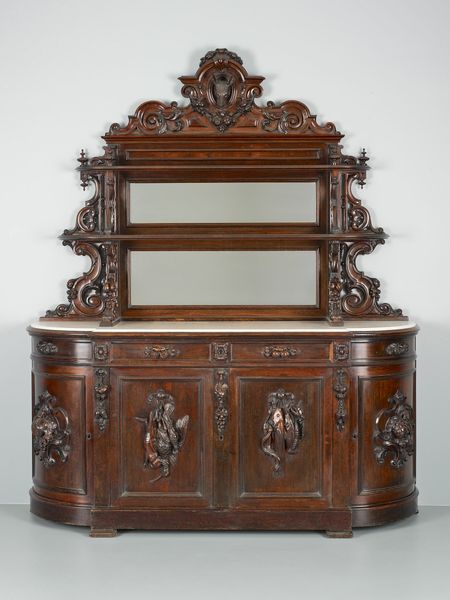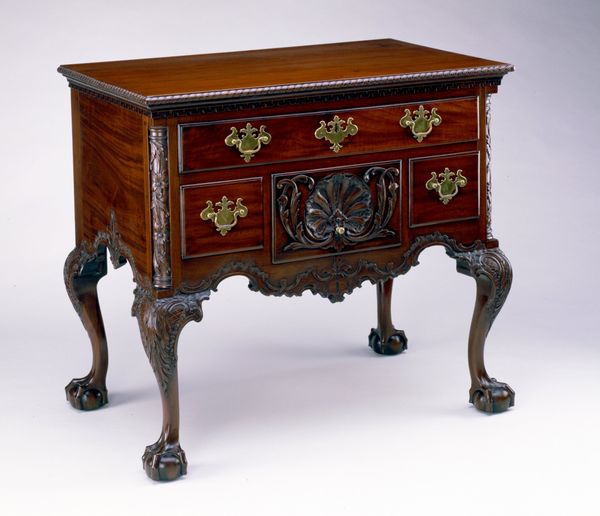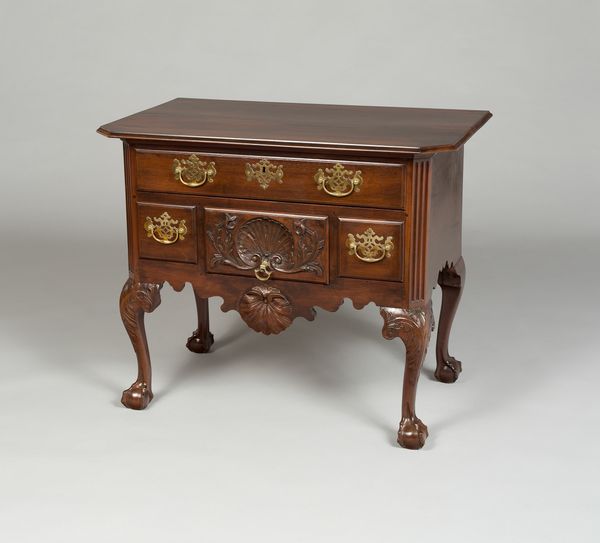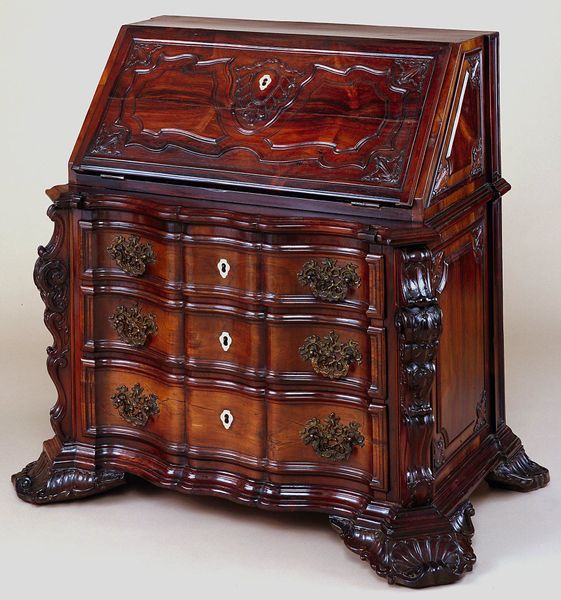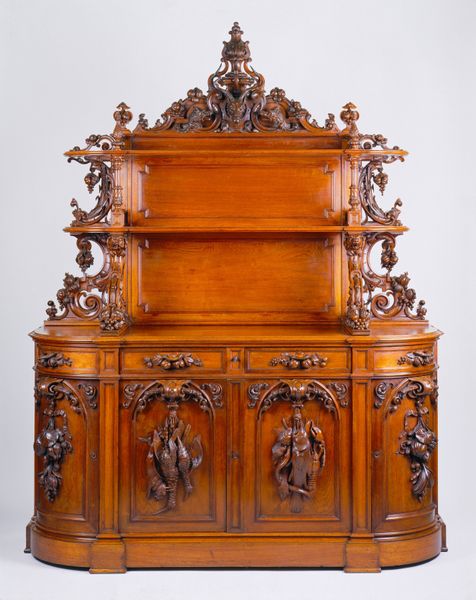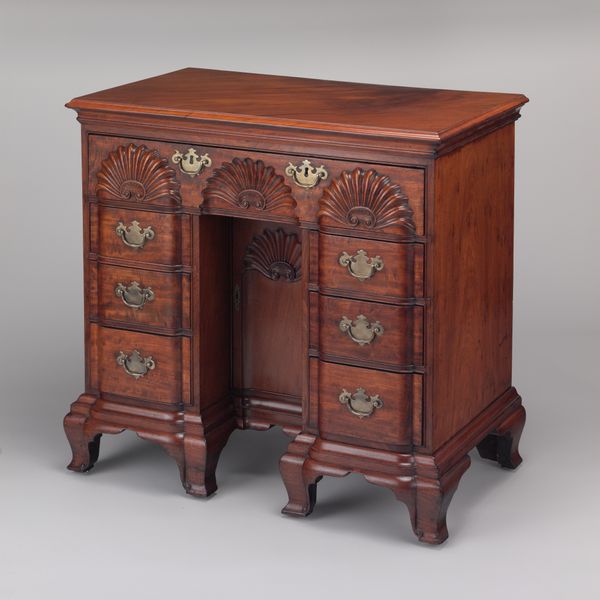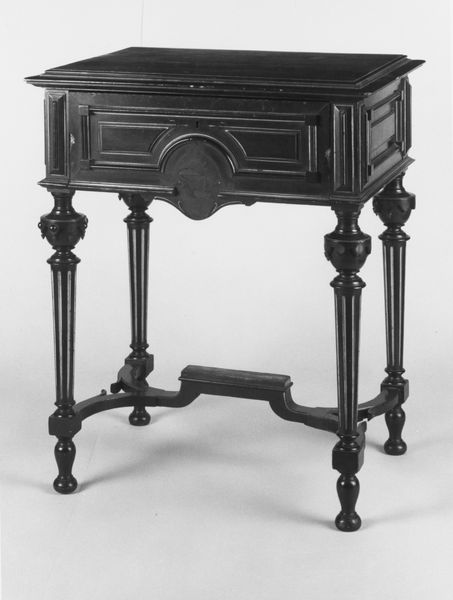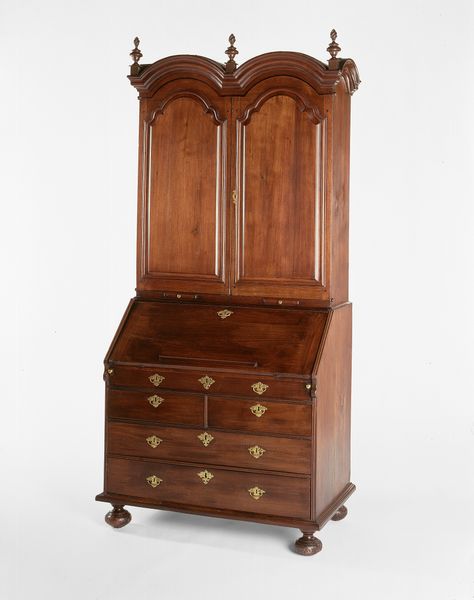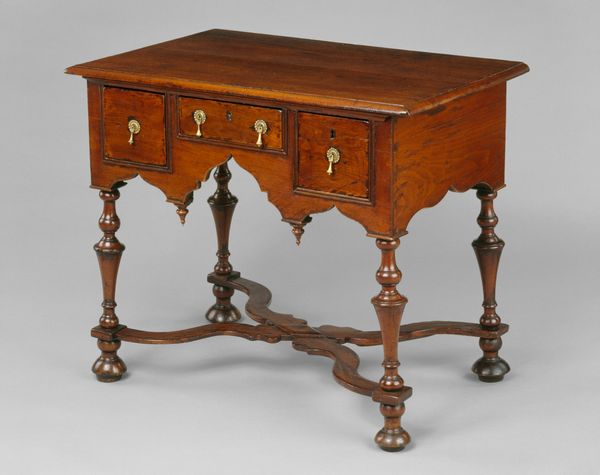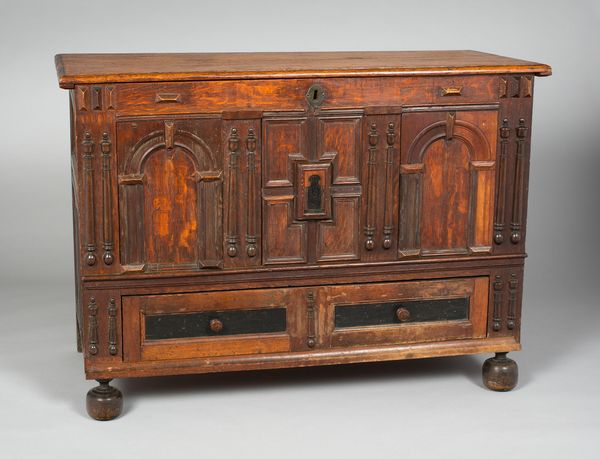
carving, sculpture, wood
#
carving
#
baroque
#
dutch-golden-age
#
sculpture
#
furniture
#
sculpture
#
wood
#
decorative-art
Dimensions: height 176.0 cm, width 130 cm, depth 58 cm, weight 120.4 kg
Copyright: Rijks Museum: Open Domain
Curator: Before us stands an exquisite piece of furniture from the Dutch Golden Age, circa 1635 to 1650: the “Tafelkast belijmd met palissander- en ebbenhout,” or cabinet veneered with rosewood and ebony, crafted by Herman Doomer. Editor: My first impression is one of somber monumentality; the dark wood absorbs the light, giving it a solemn, almost fortress-like presence. What statements were these imposing pieces making in the interiors of their time? Curator: Indeed. The dark ebony and rosewood are key elements. Note the careful composition: the vertical columns that frame the central panels, lending it a formal, architectural quality reminiscent of Baroque structures. The material itself dictates much here. Editor: The opulence of the materials – ebony and rosewood, coming from afar - speaks to colonial trade and power of the Dutch Republic. To possess such a piece meant participation in and benefiting from global structures of exploitation and wealth extraction. Can we consider such "decorative art" innocent of these socio-political narratives? Curator: The artistry isn't merely about wealth, it's also about skill. Observe the details in the carving; see how the cabinetmakers use light and shadow to articulate each form. Note how the various elements converge, creating a complex harmony. The composition transcends mere utility, aspiring to the sublime. Editor: And whose access did these markers of "sublime" exclude? These status symbols reinforced existing social hierarchies. Thinking intersectionally, how would gender, race, and class determine one’s relationship with this object? Curator: Granted, these are essential avenues for interpretation. Nevertheless, one mustn't overlook the intrinsic artistic skill invested. Editor: Ultimately, I feel we must ask ourselves what responsibility these objects carry as they move through time. Curator: A crucial thought; looking beyond purely formal elements invites richer reflection on design, intention, and the long-lasting power that objects hold.
Comments
No comments
Be the first to comment and join the conversation on the ultimate creative platform.
